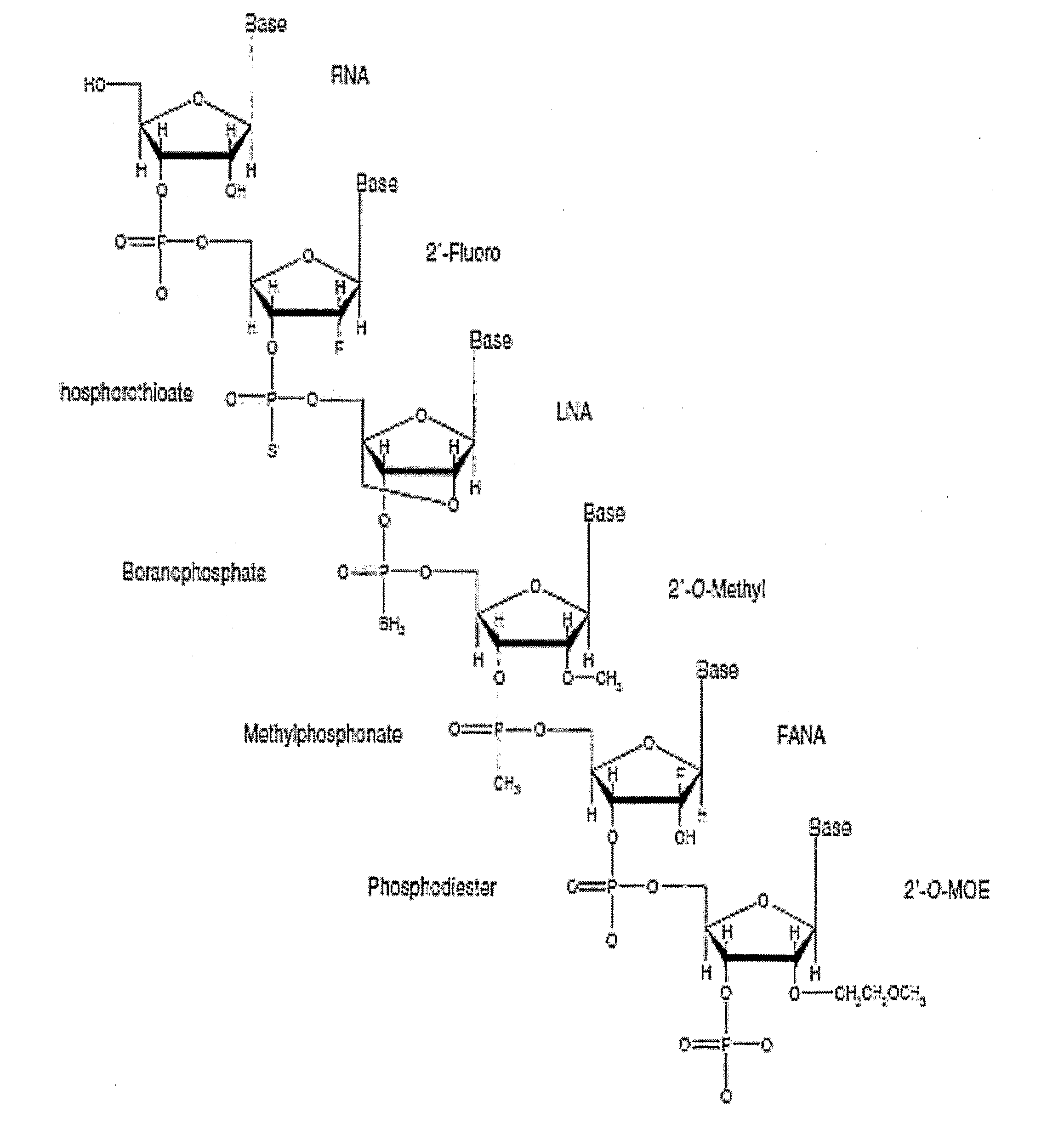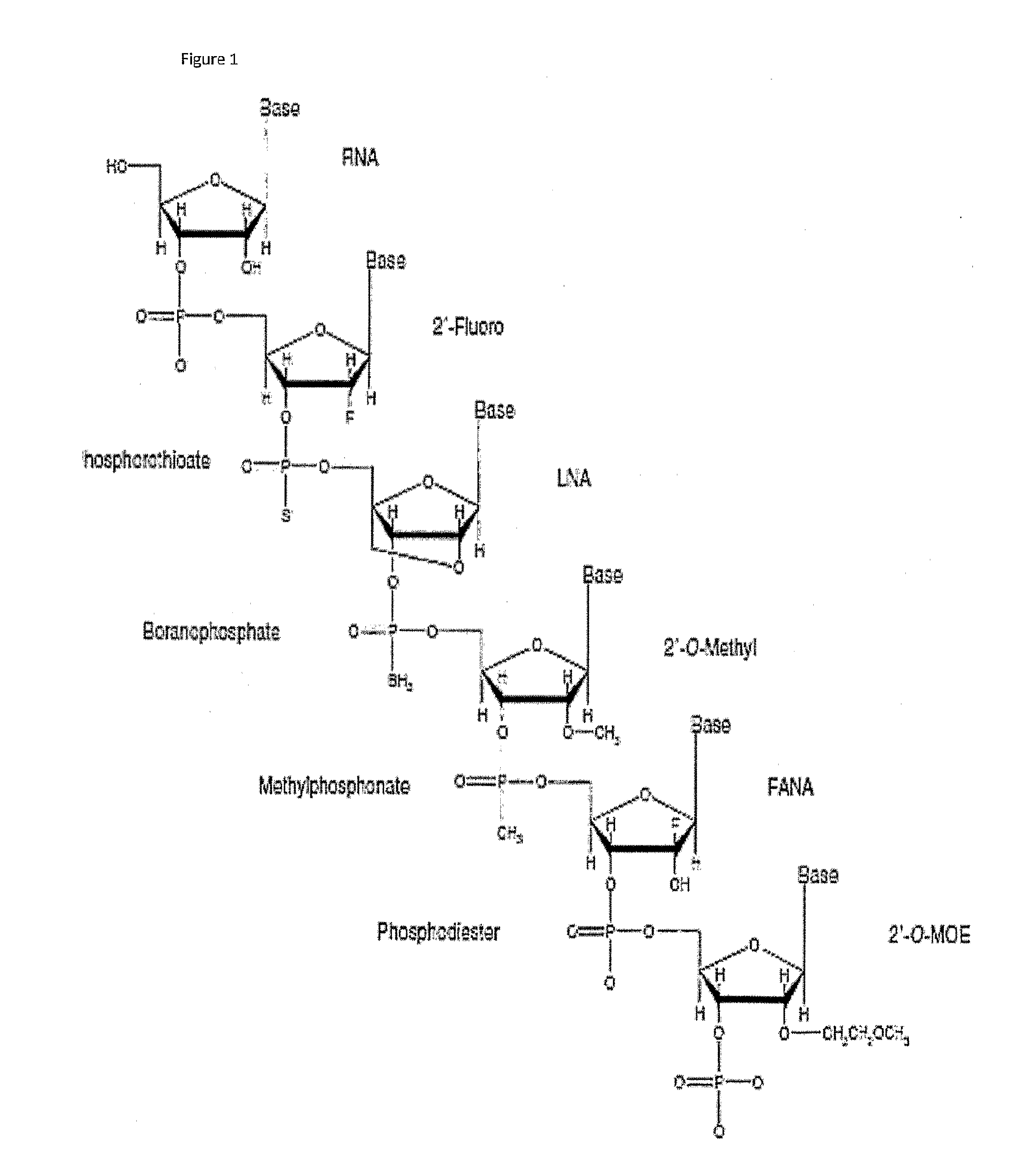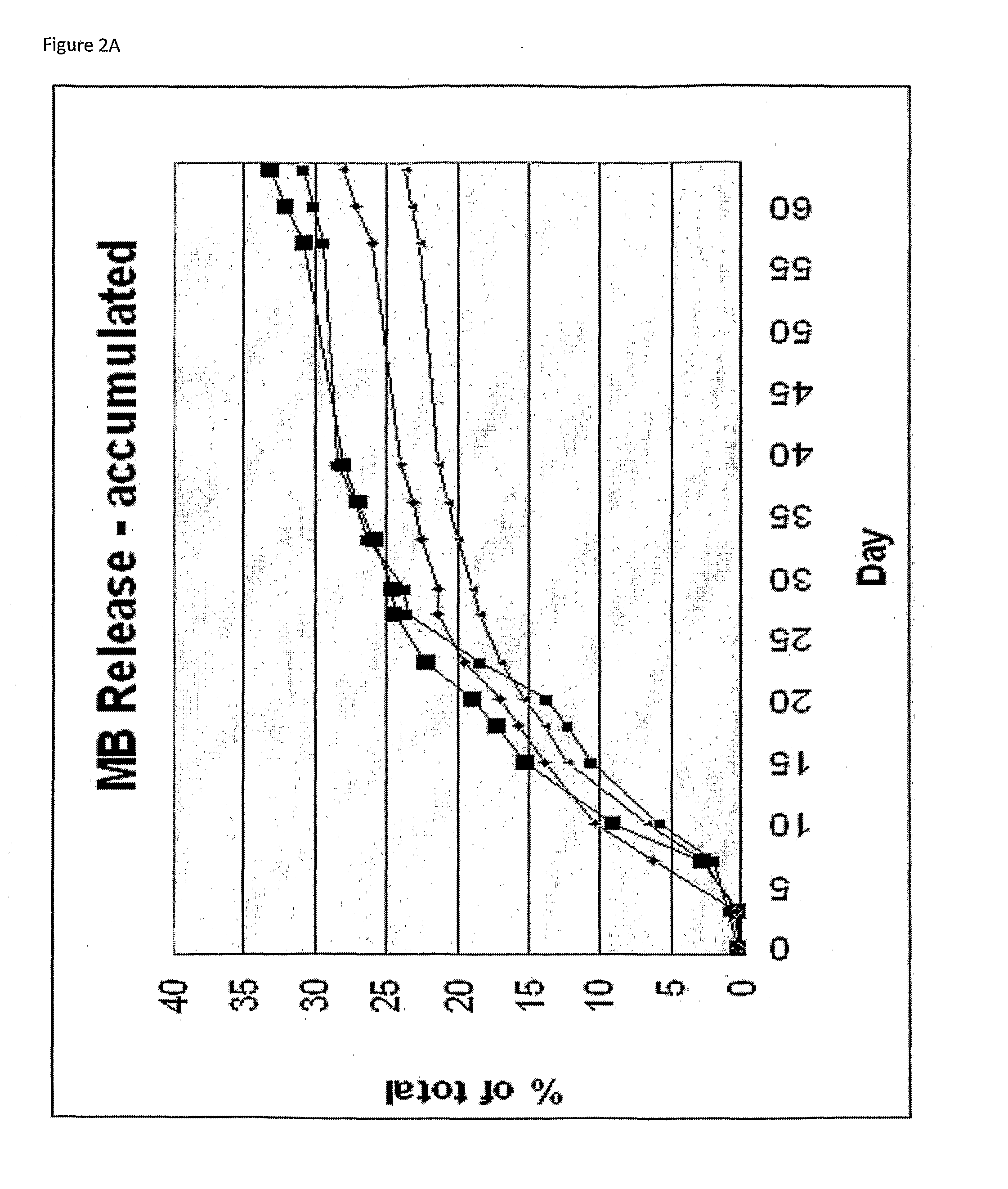Methods, compositions and systems for local delivery of drugs
a technology of nucleotide based therapeutic agents and compositions, applied in drug compositions, immunological disorders, powder delivery, etc., to achieve the effects of improving stability, reducing degradation, and improving penetration
- Summary
- Abstract
- Description
- Claims
- Application Information
AI Technical Summary
Benefits of technology
Problems solved by technology
Method used
Image
Examples
example 1
Loder Preparation
[0157]This Example provides two exemplary, illustrative non-limiting methods for preparing Loders according to various embodiments of the present invention. The first Example, Example 1.1, is a specific protocol relating to preparation of a Loder featuring a polymer film, according to some embodiments of the present invention. Unless otherwise indicated, Loders tested in various in vitro and in vivo experiments below were prepared according to this Example.
[0158]Example 1.2 relates to another method of preparing a Loder according to some embodiments of the present invention, by polymer cast.
example 1.1
Protocol for Preparation of Loder by Polymer Film
[0159]1. 10% Mannitol was dissolved in water, until a clear solution was achieved.[0160]2. siRNA was dissolved in aqueous solution and added to Mannitol (in the following examples siRNA is one or more of[0161]siGFP,—siRNA against Green Fluorescent Protein[0162]siLUC—siRNA against luciferase[0163]siK-Ras,—siRNA against K-Ras[0164]si-KRASG12D (siK-Rasmt)—siRNA against K-Ras mutated,) and complexed siRNA with transfection reagent (TR), in general a cationic polymer, with stirring to obtain a complex. Although various cationic polymers are described herein, for the below examples PEI was used unless indicated otherwise. Other transfection reagents that were successfully used experimentally include Lipofectamine 2000 (for in-vitro only) Spermine, jetPEI, L-α-Cephalin, DOPE).[0165]3. The products of stages 1 and 2 were combined with stirring.[0166]4. The resultant material was then frozen in liquid nitrogen and lyophilized for 24 h[0167]5. ...
example 1.2
Preparation of Loder by Polymer Cast
[0173]In a more generalized example the Loder is built mainly of a cast substrate, such as a matrix for example, where the die for casting is preferably designed according to the specific Loder embodiment. For example in a non-degradable Loder featuring a ring made of Silicon, for example to be used as IVR, the die is preferably of a ring shape. In another general case, the drug release mechanism in addition to diffusion, significantly and sometimes mainly is degradation of the polymer associating with release of drug. The selection of the biodegradable polymer, including combinations such as co-polymer and tri-block, and the proper molecular weight, is mainly based on the degradation mode, specifically surface degradation vs. bulk, where bulk is preferable here to achieve more stable release, and the typical degradation half time is longer then the required effective therapeutic period. Half time measurements are usually performed, and so cited i...
PUM
| Property | Measurement | Unit |
|---|---|---|
| volume | aaaaa | aaaaa |
| volume | aaaaa | aaaaa |
| temperatures | aaaaa | aaaaa |
Abstract
Description
Claims
Application Information
 Login to View More
Login to View More - R&D
- Intellectual Property
- Life Sciences
- Materials
- Tech Scout
- Unparalleled Data Quality
- Higher Quality Content
- 60% Fewer Hallucinations
Browse by: Latest US Patents, China's latest patents, Technical Efficacy Thesaurus, Application Domain, Technology Topic, Popular Technical Reports.
© 2025 PatSnap. All rights reserved.Legal|Privacy policy|Modern Slavery Act Transparency Statement|Sitemap|About US| Contact US: help@patsnap.com



